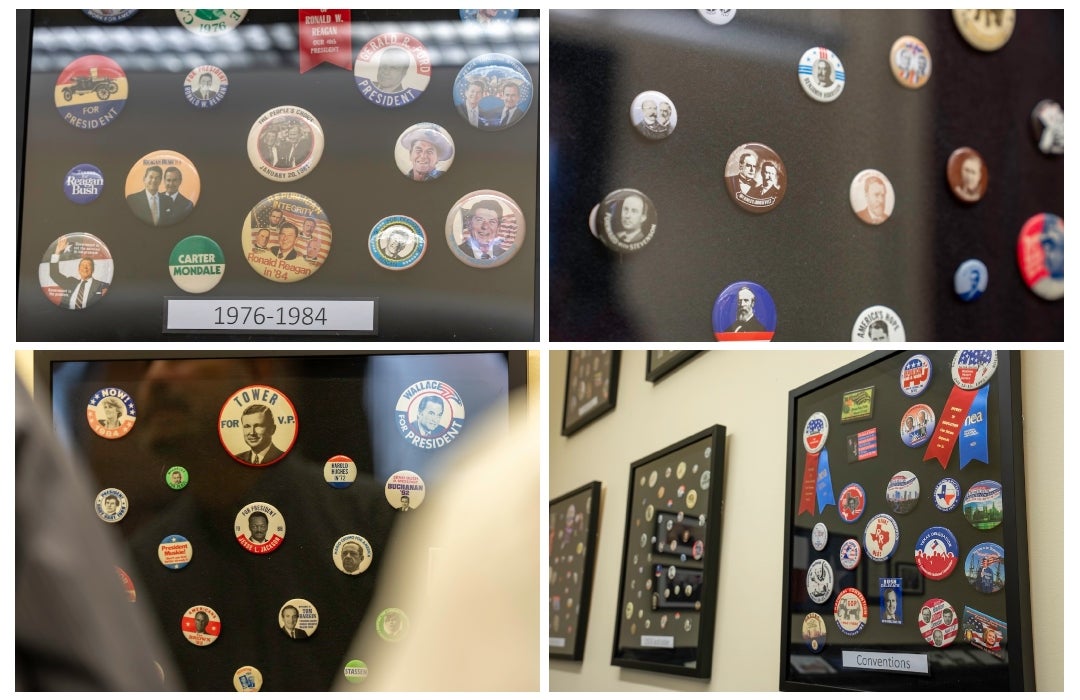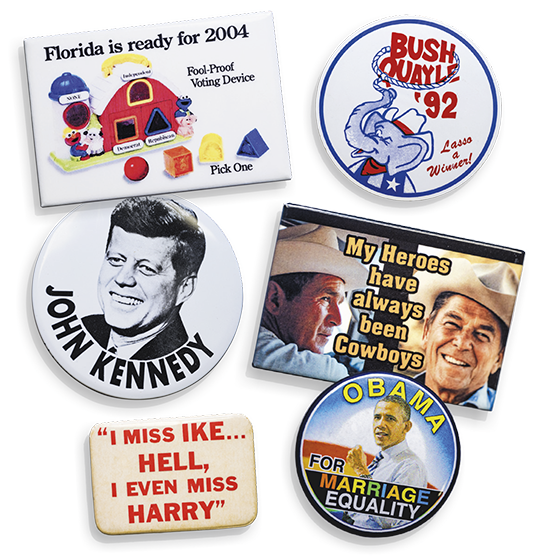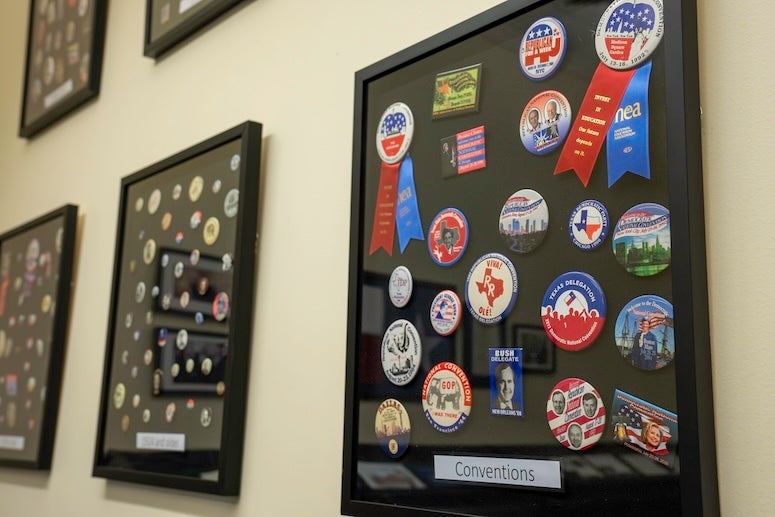
Julius “Desey” Desenberg’s love affair with political campaign buttons ignited on the bustling streets of New York in 1960. Fresh from two years of service as a Navy officer, Desenberg embarked on a 43-year journey with Merrill Lynch, where he ultimately became the company’s first vice president of investments. It was during this pivotal chapter of his life that a chance encounter — someone casually pinning a mayoral campaign button on his lapel — kindled a fascination that would evolve into a remarkable 60-year passion for collecting.
“He caught the bug for collecting buttons,” said Carol Desenberg, Desey’s wife. “Desey thought it was a fun pastime. Once he got started, he just kept collecting more and more. Wherever he went, the two of us would look for interesting political buttons that could possibly be added.”

This “bug” eventually turned into a collection of over 1,200 political campaign buttons that the Desenbergs collected through the past half-century — some witty and some rather straightforward, coming from all different political parties with messaging dating back to the mid-1800s and covering up to current day.
In July 2022, Desey passed away after a yearlong battle with esophageal cancer.
“One of his final wishes was to find the perfect institution to donate this extensive collection of campaign buttons, where it could be enjoyed for years to come,” Carol said. “Desey’s wish was that future generations could both see the history of former election campaigns and enjoy the American political election process.”
Desey met with several Houston institutions before finding the right fit: the Baker Institute for Public Policy at Rice.
“He was ecstatic about the future of his collection,” Carol said. “I honestly think the culmination of this wish was one of his last thoughts.”
“This important addition to the Baker Institute will serve as a constant reminder of the role politics plays in our great nation as well as Americans’ enthusiasm for it,” said Mark Jones, Baker Institute fellow in political science and Rice’s Joseph D. Jamail Chair in Latin American Studies. “The buttons provide a succinct review of American history and the people who made it and represent the largest public collection of presidential election buttons in the country.”

A curated portion of the buttons are now cased in the front of the Baker Institute’s Baker Hall for all who enter the building to see upon entrance.
A reception was held Oct. 14 unveiling the new exhibit, which will remain at the Baker Institute. The remaining buttons are available for research at the Woodson Research Center in Fondren Library.
“The Desenberg family is eternally grateful to the Baker Institute for Public Policy and the Woodson Research Center for housing this collection for all to enjoy,” Carol said.
Fondren Fellows
The donation also sparked the creation of a project within Fondren Library through its Fondren Fellows program.

Nathaniel Nokken, a junior political science major, with the help of Jones, took on the task of cataloging the collection, developing it into an exhibit and including it in Fondren’s holdings as well as the digital archives.
“Our project is to catalog and help preserve this for the next generation and really bridge the gap from these things that seem like they were a long time ago that really aren’t so long ago,” Nokken said. “We’re bringing these to the modern era, putting some more attention on it and making sure that these people, campaigns and elections aren’t forgotten.”
The process was “a little daunting at first,” Nokken said. But they developed an individual code for each button, helping to order and identify them.
In the process, Nokken says they have studied the iconography and messaging of each button.
“We’re looking at how the political messaging has changed, especially from the beginning of the 1900s,” he said. “Back then, it was really as simple as a picture and a name, and as we progressed through the ’60s with John F. Kennedy and the ’90s with Bush and Clinton, it went from very simple to very unique. Each candidate now has a very clearly defined style.”
With the U.S. presidential election coming up in November, the timing for this donation was ideal, Nokken said.
“It’s been a great way to look at American elections,” he said. “This will be my first time voting for the presidency in this upcoming election, so it’s been really interesting.”

